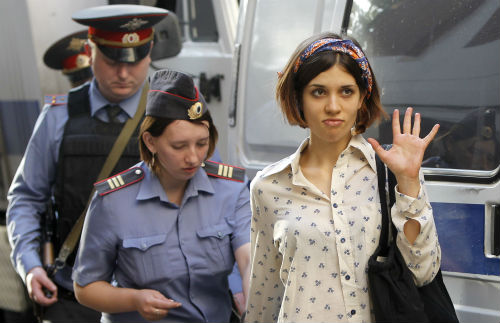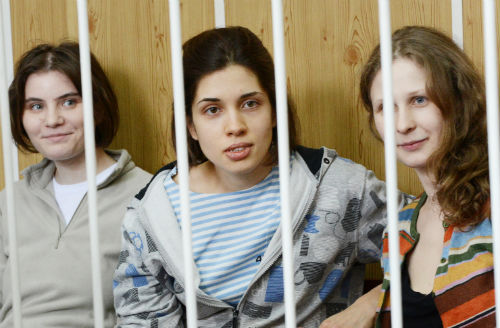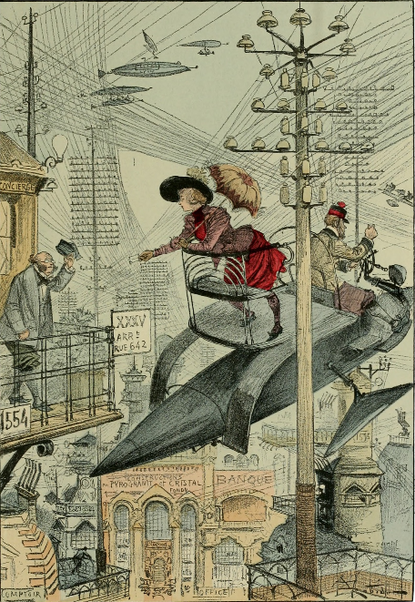The success of project Pussy Riot
The events that unfolded following the feminist punk group Pussy Riot’s performance in Moscow’s Cathedral of Christ the Savior - the arrest of some of its members, the reaction by the media, politicians, human rights advocates, all kinds of experts and stars – lead to a widely held viewpoint that even the group’s opponents agree with for the most part. The unprecedented level of attention by the world media and iconic cultural figures, the polarization of Russian culture over the sentencing of several group members, the international solidarity campaign, the public outcry over official church policy (something that remains impossible in independent Russia) - all this speaks of the uniqueness and success of the situation.


The performance and its consequences seem like a well-oiled machine, a bullseye. Its effectiveness and the scale of its impact on society have been described as unprecedented, amazing, subversive, super. For many of the group’s fans, the extraordinary response and complex public reaction to the video of their performance makes it a work of contemporary art. In this work, as critics will say, quoting the ideas of Walter Benjamin, the boundary between the political and the aesthetic is blurred; it is an avant-garde gesture that tears down the veil of the postmodern smog and becomes established in reality, transforming it.
The meaning of the action, as reflected in the dynamic of public opinion, has been analyzed fairly many times over. I would like to visualize some of the transformations of the group’s ideas, reflected and magnified by the media’s mirrors. Although the information source - the video of the group’s action - remains unchanged, its meaning is partially transformed depending on the context in which it is replayed.
The action in the Cathedral of Christ the Savior as a contribution to contemporary world art
The episode in the Moscow church is gradually gaining the status of a domestic achievement, Russia’s long-awaited contribution to world culture. With this action, for the first time in many years, Russia appeared on the international contemporary art stage with an original product that doesn’t read like an oppressive imitation of the West. Such a conclusion is possible only against a worldview where a palpable barrier separates Russian culture from the mythical “western” or “global” context. Chaadayev’s gap, they say, is insurmountable. Russia remains outside world history and has to present to the world something that at once reflects its fate and confirms the value of its particular experience. What else can assume this role than a heroic feat, iconographically woven into the patriarchal clerical iconostasis, a riot by several rebels again a tyrannical, unyielding, repressive government? The image of faith that emerges from the prayer “Hail Mary, Expel Putin” promises to transform reality. Faith is founded on the possibility of miracles, the possibility of fulfilling unfulfilled wishes; here freedom and the potential of collective direct action are interpreted as nothing other than a miracle.
Pussy Riot’s actions take on real politics and are a genuine rebellion. Reduced to being the most prominent work of Russian contemporary art, let it be political, they are enclosed within the narrow framework of the traditional dialogue with the West, full of all sorts of missionary stereotypes.

Heroism

The legal state and civil society have left all opportunities for a heroic deed in the distant past. According to Hegel and Vico, the era when heroism was possible ended long before the emergence of the modern state. A hero is guided solely by his own will; taking on the burden of creator of history, with the blessing of the higher powers that be, and executing the sentence of an inevitable fate. The widespread portrayal of the punk group’s action as heroic, or the heroization of its members’ courageous behavior in court, adapts the information space around Pussy Riot for a certain type of consumption. The group’s actions, aimed at change, become rooted in social norms and thus fit outside these norms. The meaning easily flows out of actions. They no longer read as a call to action if they are presented as an extraordinary event, an exception to the rules, something that can only be done in a single and heroic dimension where social bans, laws and common systems of values don’t apply.
The flip side of heroization is the rhetoric of suspicion, conspiracy theories (that in this case also have an element of mystery) that are perfect for the media “gladiator fights” that unfolded on various TV shows in Russia and abroad.
Both of the media representations mentioned above attack the moment of unpredictability throughout Pussy Riot’s history of protest. This perspective transforms every subsequent event into a fact inseparable from the given scenario. The empowerment of social protest and potential for a new beginning related to the activities of the punk group exist not because of its heroization, but contrary to it.
Openness, anonymity, solidarity
“Anonymity and the masks that hide their faces became part of the group’s image in order to prevent fixation on specific personalities. For Pussy Riot the members’ biographies mean nothing. Our concerts were supposed to be purely protest statements: super heroines in bright colored balaclavas and acidic stockings take over Moscow’s public space. (…) Pussy Riot doesn’t have the structure of a classical music group and we don’t have permanent members. Pussies can take root and spring up anywhere, where you least expect them.” (From an interview with members of Pussy Riot for gazeta.ru, 27.02.2012)
Anonymity is characterized by universality. It is dangerous and absorbs private identity for the sake of a broader utopian hope. Anonymity creates an image that’s like a castle in a fairy tale - it’s much wider on the inside than outside. Through the image’s open door anyone can assume a role in order to co-opt beliefs and political order, split and supplement them. The activist media message, which the punk group’s video was, is also disseminated and multiplied namelessly and uncontrollably. Its source is often difficult and impossible to establish. It easily overcomes obstacles that don’t succumb to direct pressure. The video represents a similar triumph because the sound was added after the action in the church.

During the trial of three members of the punk group - Nadezhda Tolokonnikova, Maria Alyokhina and Yekaterina Samutsevich - the masks covering their faces were ripped off, making anonymity and openness now impossible. The open project with an unknown number of male and female members was transformed, not without the help of the Russian authorities and media, into three women’s individual protest against Putin’s despotic rule and the increased role of the Orthodox Church in Russian politics.
From the start of the trial until the delivery of the verdict, the identified members of Pussy Riot became its only embodiment. The involvement in the media whirlpool of the church and its numerous spokespersons cast an iconographic shadow on the three defendants. They appear as setting icons, as the faces of great martyrs reviving Orthodox values, or the demonic masks of modern day “blasphemists”.
Their arrest and subsequent media campaign made it possible to be in solidarity with the arrested participants of the punk prayer without sharing their ideas - protests, anti-Putin, feminism, separation of church and state.
Public debate, the polarization of society, the unprecedented solidarity by Russian cultural figures who signed an open letter in support of the arrested women - all this became possible because Pussy Riot’s demands were inextricably intertwined with their case, their fate, their personal history. If before their arrest the balaclava was a sign of agreement with the group’s ideology, today it has been reduced to a vague human rights discourse that hides under its integuments a leftist and anti-patriarchal criticism of government.

Thanks to the repressive actions of the state and the new freedom for radical feminism, public performance, street theater and public transformation, everyone became aware of the long-familiar need to be free of a repeat of such baseless repression. But the language of protest isn’t so easy to reformulate.
In the case of Pussy Riot, direct political action covered by the inevitability of advocacy, repeatedly asserts itself here and now - it’s an experience in the fullness and intensiveness of life that makes possible actions of solidarity that lead to social and political transformations. Seeing it once, you can learn to always keep it in sight, not allowing the murderous substance of media icons, legends and emblems to take its place.

Yevgenia Belorusets
Translator: Christina Redko










